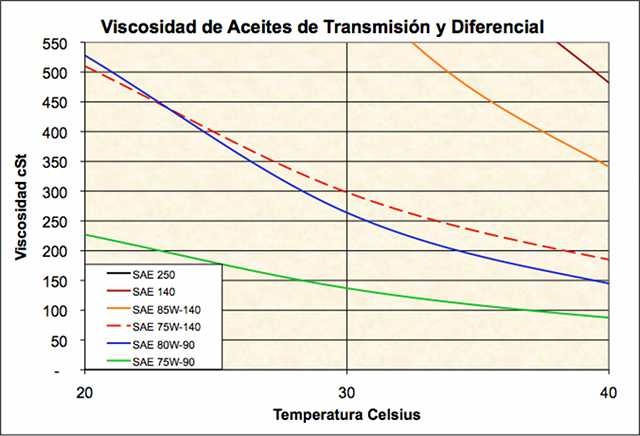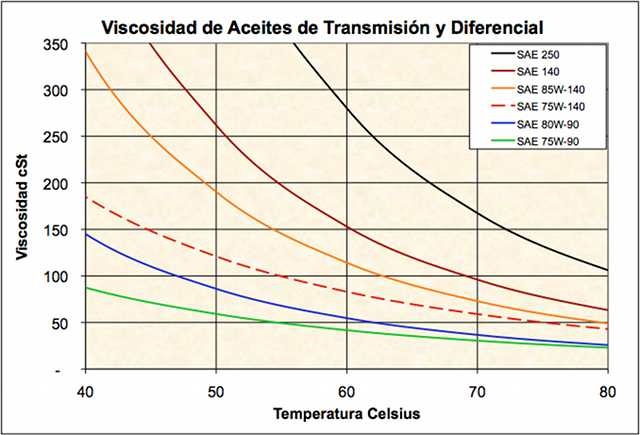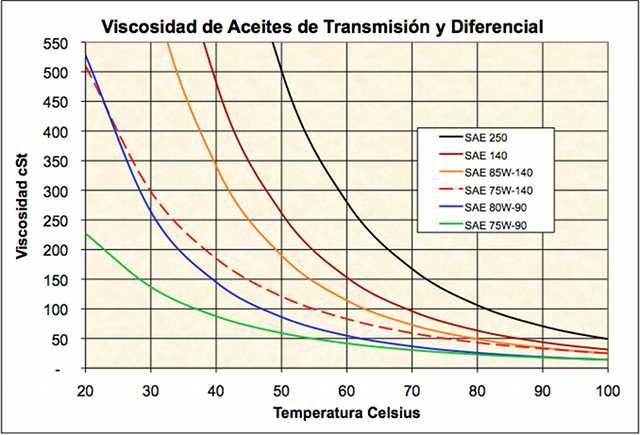Comparación de viscosidad entre diferentes aceites a temperaturas de las piezas en movimiento dentro de la Transmisión o Diferencial
Welcome to the SKALN Customer Portal, where our customers can view and download useful information such as MSDS's. If you would like to open an account, please contact us.
Comparación de viscosidad entre diferentes aceites a temperaturas de las piezas en movimiento dentro de la Transmisión o Diferencial
Viscosity comparison of different oils at operating temperatures of the transmission and differential.
SAE 250 and SAE 140 are too viscous for almost any application of the last 30 years
This graph is for typical products
To calculate the graphs of any four specific oils with their spec sheets and our graphic conversion tool, click here. (note, this tool uses Flash which may not work on some devices.)
Between 20°C and 40℃In normal drives in the sito and short drives, the transmission and differential operate between 20℃ y 50℃. At these temperatures they require an oil in the SAE 75W-90 y un SAE 80W-90 range, if not less. Newer automotive transmissions often require 75W-80 or 75W-85.

Between 40°C and 80℃On longer trips or constant city use, the transmission and differential have enough friction in the bearings and gears to generate more heat. The temperatures normally run between 50°C y 75°C.

Between 20°C and 100°CThe oil in these componentes needs to circulate in the cold and provide protection in the heat. The viscosity curve should be the latest possible.
Here we can see a range of 20°C through 100°C where it could reach in heavy city traffic or mountains.
